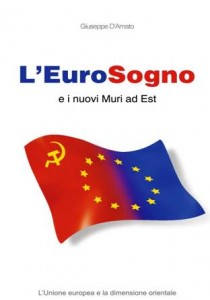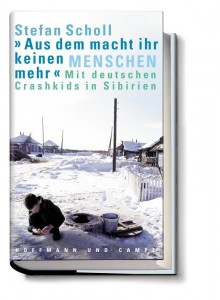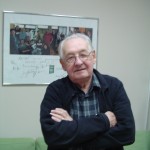All English posts
People at Visaginas are frustrated. According to plan last reactor at the Soviet-era nuclear plant of Ignalina has been shut down at 11 p.m. local time. The future has become unpredictable for thousands of high qualified specialists. Will the town of 25,000 inhabitants be abandoned by most of them? The youngsters have already left looking for better jobs in the capital – 2 hours ride by train – or in Russia.
Vilnius agreed to close the facility by 2010 in order to win admission to the EU in May 2004. The plant was built in the 1980 and is considered by many to be unsafe since it shares design flaws with the Chernobyl unit that exploded in 1986.
Lithuania – one of the two most nuclear-energy dependent nations along with France – had been hoping that Brussels would allow it to keep Ignalina open for another two to three years, but the European Commission flatly refused. The EU allocated about $1.2 billion to cover part of the plant’s decommissioning costs.
The country risks to become too dependent on Russian gas supplies. Last shutdown reactor had a capacity of 1,320 megawatts, making it one of the largest reactors in the world. It supplied over 70 percent of Lithuania’s electricity needs. Power prices in the country of 3.3 million people were to rise by 30 per cent for households and 20 per cent for businesses, marking a new blow amid one of the world’s deepest economic crises.
Lithuania’s economy shrank by 15.2 per cent in 2009, the Government estimated, and the nuclear shutdown could shave up to 1 percentage point off gross domestic product this year, experts say
The former Soviet republic is seeking European investors to underwrite construction of a new nuclear power plant. Among the companies under consideration are Britain’s Centrica PLC, Germany’s RWE, Electricite de France, Germany’s E.ON AG energy corporation, the Czech Republic’s CEZ, Finland’s Fortum Oyj, Italy’s ENEL, France’s GDF Suez, Sweden’sVattenfall, U.S. company Duke Energy, Japan’s Toshiba, France’s Areva and Spain’s Iberdrola.
After January 2009 gas dispute between Russia and Ukraine leaving half Europe without supplies was the EU decision to shut down Ignalina the right one and in the right moment?
The legendary Kalashnikov turns 90
12 Nov 2009One of the symbols of its land, a myth and a legend. Mikhail Kalashnikov has been a hero for generations of Soviets and Russians. For a long period the world thought that this man didn’t even exist and it was an invention of communist propaganda. “It was the Germans who turned me into an arms designer,” he says.
“ If I hadn’t taken part in the war, I would probably have made technology to ease the tough work of the peasants.”
Mr Kalashnikov started working on his rifle, driven to design by Soviet defeats in the early years of World War II at the hands of far better-armed German soldiers. From the start, he clearly identified his own principles of design: his submachine gun should be simple and reliable. It was only in 1947, after the failure of numerous prototypes, that Kalashnikov’s design was accepted in a competition organised by the defence procurement agency. “I created this weapon primarily to safeguard our fatherland,” he says.
Although some 100 million Kalashnikovs have been produced during its 60 years of service, only roughly half of them are licenced output, meeting Russian quality standards. 30 foreign producers currently make them and 55 countries are using the Kalashnikov, a weapon put on the Guinness Book of Records for its popularity.
The Izhmash machine-building plant was the first to launch mass production of the AK-47 rifle that spawned a whole new generation of small arms.
Read Tony Halpin The Times November 11th, 2009
Poland. Another spy scandal
27 Oct 2009A top anti-corruption agent has been unmasked. His life is in danger now. In the past he investigated Jolanta Kwasniewska and her husband Aleksander, the former President, on suspicion of not declaring their full income.
Roger Boyes – The Times – October 23rd
Russia – OPEC cooperation or competition?
27 Oct 2009As OPEC members cut the production Russia became the world’s largest exporter. Profits and share prices of Russian companies like Lukoil and Rosneft are up and the Russian budget deficit is coming down. New tax incentives in Russia encouraged companies to continue drilling.
Andrew Kramer – New York Times, special report – October 19th, 2009
article
A dramatic change
30 Sep 2009After May 2004 Central and Eastern Europe had a dramatic change. On one side Russia is trying to maintain its influence in the region, on the other former Kremlin’s satellites are looking for a new dimension. The European integration is one of the crucial topics in the EU agenda. The risk of isolating Moscow is real as its anger as a resurgent power.
The western world needs Russia as a faithful ally for its raw material wealth, for its military capability, for its culture, for its experience in dealing with eastern peoples. There are too many existing challenges in the 21st century to do alone: nuclear proliferation, international terrorism, migration, climate changes, Chinese emerging power, reducing traditional energy sources.
Former Soviet republics and ‘new European’ States are seeking a difficult balance to reach. The history of the terrible for the entire Euro-Asian region 20th century still provokes political divisions in current affairs. How long will these problems continue to be painful?
Iran nuclear programme is the first topic in the international agenda after a secret site has been recently discovered. President Obama decided to replace George Bush’s plan for the anti-missile Shield in Central Europe, clearing the way for better relationships with the Kremlin.
Iran maintains that its nuclear activities are peaceful, a view that is publicly shared by Russia, first supplier of atomic technology to the ayatollah. Prime Minister Vladimir Putin said earlier in September that there was no evidence that Iran was developing a nuclear bomb. The United States and Israel want Moscow to modify this position now.
The strange story of the Russian ship ‘Arctic Sea’ with a probable cargo of S-300 anti-aircraft missile systems created anxiety in a number of European capitals. All options against Teheran, including the military, are open in this moment. But what will Moscow do in case of an air attack against Iran? Will Russia miss the super-chance given by Obama to reset the relationship with the West?
The truth on a crime hidden for half of a century. The defeat of a perfidious fabrication based on the silence. The will to give his farewell to this unbelievable tragedy. Katyn by Andrzej Wajda summarizes all this.
Its watching is in some points simply upsetting: impressive psychological portraits are mixed with scenes from a shambles. “We have been waiting for the right moment to make a film on the massacre of Katyn. The lie and the crime, connected with this event, are well inside our national conscience,” says the great Polish director.
More than 22 thousand Polish citizens, taken prisoners in autumn 1939, were slaughtered in USSR by NKVD, Stalinist secret police, in spring 1940. For decades the Nazi were unfairly accused of this butchery. “That dreadful falsehood was one of the basis of the Polish – Soviet friendship even if there were documents, dated 1943, that stated the opposite. It was denied the obvious ”, underlines Wajda.
The relatives of the victims were frightened to accept the invitation to attend the film that was watched by more than 3 million people only in Poland. “Many of them lived those terrible years again at the cinema and found in the film episodes from their personal tragedies”, admits Isabella Sariusz Skapska, secretary of the Association of Families.
“For years we have been seen photos and documents of Katyn, but there wasn’t the image,” says Andrzej Wajda in his Warsaw’s school of cinema. “We needed to explain in a visual way how a tragedy like this could happen. Such terrible historical events must find their place in the art if we want them to survive in the memory. Watching the film, people understand that this is the past. There’s no aim of revenge. Our film is a kind of funeral, an attempt to close with this drama forever.”
Which sources did you use? “The documents signed by Stalin and the Politburo are well known. Our work is not a documentary film. The events in the plot are taken from the tales of the victims and of their families. They are real stories.”
You have dedicated this film to your parents. How much is it autobiographic? “It isn’t all. My father was killed in the prison in Kharkov after being in Starobelsk. My mother lived till 1950 hoping that my father were safe. There wasn’t his name on the first edited Katyn list. Only thanks to the Red Cross aid later we discovered the truth.”
You are saying that there isn’t any personal element Katyn, aren’t you? “A character that is, may be, close to my mother is Anna, Andrzej’s wife, the officer of cavalry. In the film she is played by Maja Ostaszewska. It’s the woman who gives the farewell to her husband who goes to the captivity.”
In your film you used two real historically true symbolic images: a coming down from the cross Christ with a broken arm who lies among injured prisoners under a plaid and some Soviet troops who tear out the Polish flag. “It wasn’t necessary to have many. We used also some pieces from the original German and Soviet propaganda films of that period. We didn’t touch them, because this is the best way to show the manipulation of the truth. The event is the same, but the remarks are different. At the end of the film we added from the literature another symbol, that is the history of Antigon. A girl cuts her hair to defend the memory of her brother who dies fighting for his right to state that his father was killed by the Soviets.”
In your opinion, what did the Soviet executioners think doing their dirty work? “There are documents with their number and names. NKVD’s killers slaughtered a victim after another. They did it mechanically without thinking. It’s impossible to carry out certain orders in another way. Every day they had to murder a hundred of Polish prisoners. From April 5th to the beginning of June 22 thousand people from 3 camps were killed. The most incredible thing is that even the Soviet executioners were later killed, because they became dangerous eyewitnesses.”
Is that of Katyn a crime of communism or of a totalitarian system? “The communism was a totalitarian system. Soviet Russia was a totalitarian State. This is a crime against humanity, one of the biggest reason of today’s bad relationship between Warsaw and Moscow. The Russians speak about Katyn as a tragedy provoked by the situation. We were enemies in war. The Poles respond it wasn’t necessary to kill all those people.”
Moscow’s newspaper Rossiiskaya Gazeta harshly criticized your film arguing that you didn’t use trustworthy sources. “It is not true. The documents are clear. The Germans discovered the mass graves and they analysed them in 1943. When the Polish prisoners were killed those regions were in Soviet hands. Berja and Central Committee’s documents with Stalin’s signature were delivered to President Lech Walesa in the Nineties. The rest was found in victims’ pockets. There are detailed notes, where everything is written. For example, from Adam Solski’s diary ‘we got on a truck at 6 in the morning. Who knows what’s going to happen?’ In the film we used this historical testimony.”
What was the most difficult thing to do in this film? “It was the decision to make the film. But, then, how to play it? How and what to tell? The killed soldiers’ stories? The women’ ones? Which historical period should we choose? We had to select the material. A film like this one must last no more than two hours. Was it better to decide for the story of one family or of more people? I chose to have more characters to use more memories and to be more free in the plot.”
Your film was shown in Moscow only twice at the mid of March: in the House of Cinema and in the House of Literature. There are serious problems. Katyn goes against common Russian belief of their history. “We have contacts with the human rights society Memorial. We are looking for fearless people who want to distribute our film.”
From your point of view, is this the time for the penitent of the Russians, as heirs of Soviet Union, and for Polish forgiveness? “The film was made with this idea. Russians made important steps ahead with the delivery of the documents during Mr. Gorbacev and Yeltsin Presidencies. May be, we should have made Katyn ten years ago. But this is art! The only thing I don’t want now is the political manipulation of our film.”
Personally, as a practicing Catholic, do you forgive your father’s killers? Mr. Wajda turns his face on his right side. He keeps silent for long endless seconds when we regret for this necessary question. Then, the great Polish director frowns and answers with a trembling voice. His eyes have become watery all of a sudden. “The Russians must face their own past. They must stop with their tales about their history full of glory and with their speeches on ideal systems. They should follow the example of Solgenitsin and of Memorial. Here, we are not speaking about the forgiveness of one person, but of the entire Polish society. After the end of World War II Polish bishops wrote a letter to the German episcopate. They pardoned German people, because they saw convincing steps from the other side. You may forgive when the others recognize their sins.”
Giuseppe D’Amato
March 24th, 2008
See also Katyn. The end of a shame? EuropaRussia April 7th, 2010.
Poland: interview to Mr. Lech Kaczyński – 2005
19 Aug 2009Interview to Mr. Lech Kaczyński, new Polish president – October 2005
1. “It’s not true that especially people from the countryside and from the provinces voted for me. It’s a myth! Important parts of the Polish society are worried about market economy. We will change this attitude. However, we can’t deny that Donald Tusk has obtained a considerable amount of votes in big towns”.
- “I need a period of rest” (before stepping in as the new president).
- You have been described as an euro-sceptic. “I’m against the EU Constitution, but I was for the entry of Poland to the European Union on May 1st, 2004”.
- “I’m for the complete participation of Poland in EU, but I’m also for the defence of the Polish interests”.
Relationship with Russia? “It’s important for us to establish a firm policy towards Moscow. We are looking for EU members, who may help us to carry on this political line”.
Welcome
We are a group of long experienced European journalists and intellectuals interested in international politics and culture. We would like to exchange our opinion on new Europe and Russia.
Categories
- Breaking News (11)
- CIS (129)
- Climate (2)
- Energy&Economy (115)
- EU Eastern Dimension (85)
- Euro 2012 – Sochi 2014 – World Cup 2018, Sport (43)
- Euro-Integration (135)
- History Culture (198)
- International Policy (261)
- Military (74)
- Interviews (18)
- Italy – Italia – Suisse (47)
- Odd Enough (10)
- Poland and Baltic States (126)
- Religion (31)
- Russia (421)
- Survey (4)
- Turning points (4)
- Ukraine (176)
- Российские страницы (113)
Archives
- November 2020
- October 2020
- September 2020
- August 2020
- July 2020
- May 2020
- April 2020
- March 2020
- January 2020
- December 2019
- November 2019
- October 2019
- September 2019
- August 2019
- July 2019
- June 2019
- May 2019
- April 2019
- March 2019
- February 2019
- December 2018
- November 2018
- October 2018
- September 2018
- August 2018
- July 2018
- June 2018
- May 2018
- April 2018
- March 2018
- February 2018
- January 2018
- December 2017
- November 2017
- October 2017
- September 2017
- August 2017
- July 2017
- May 2017
- March 2017
- January 2017
- December 2016
- November 2016
- October 2016
- September 2016
- July 2016
- June 2016
- May 2016
- April 2016
- February 2016
- January 2016
- November 2015
- October 2015
- September 2015
- June 2015
- April 2015
- March 2015
- February 2015
- January 2015
- December 2014
- November 2014
- October 2014
- September 2014
- August 2014
- July 2014
- June 2014
- May 2014
- April 2014
- March 2014
- February 2014
- January 2014
- December 2013
- November 2013
- October 2013
- September 2013
- August 2013
- July 2013
- June 2013
- May 2013
- April 2013
- March 2013
- February 2013
- January 2013
- December 2012
- November 2012
- October 2012
- September 2012
- August 2012
- July 2012
- June 2012
- May 2012
- April 2012
- March 2012
- February 2012
- January 2012
- December 2011
- November 2011
- October 2011
- September 2011
- August 2011
- July 2011
- June 2011
- May 2011
- April 2011
- March 2011
- February 2011
- January 2011
- December 2010
- November 2010
- October 2010
- September 2010
- August 2010
- July 2010
- June 2010
- May 2010
- April 2010
- March 2010
- February 2010
- January 2010
- December 2009
- November 2009
- October 2009
- September 2009
- August 2009
Our books





